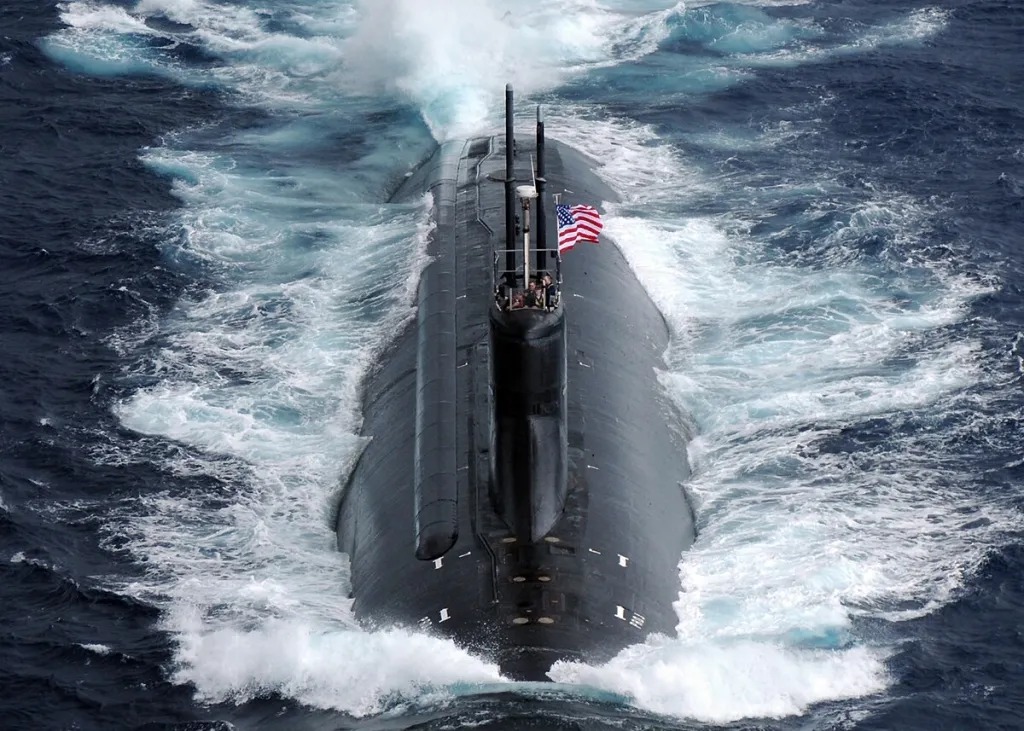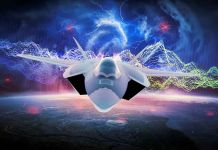Three years after a formidable Seawolf-class nuclear attack submarine of the US Navy suffered an unprecedented collision in the South China Sea, Beijing has declassified some documents that may provide a new dimension to the mysterious accident that rattled the United States.
French Warplanes That ‘Wreaked Havoc’ On British Warships During Falklands War Retired By Argentina
The USS Connecticut (SSN-22) collided with an underwater seamount in the South China Sea on October 2, 2021. The US Navy took five days to announce that the submarine had hit a seamount while traveling at high speed in inadequately mapped waters.
This, however, failed to inspire confidence in China. Later that month, the Chinese state-owned publication Global Times published a report lamenting the US for not releasing crucial information about the accident of a nuclear-powered submarine.
Chinese analysts said the accident had exposed intensive, hidden US military activities beyond freedom of navigation in the region.
An investigation conducted by the US later revealed that the accident had occurred due to the crew’s lapses in navigation planning and unfamiliarity with the South China Sea. The failures “fell far below US Navy standards,” the investigation revealed. The report said at least 11 crew members of the submarine were injured, and the nuke submarine lost its radar dome on the transit to Guam after the crash.
The incident dealt a heavy blow to the reputation of the US Navy’s most potent, deadly, intricate, and pricey nuclear attack submarine, the Seawolf class, which was built for elite operations near the enemy’s coast.
For many years, China was concerned about the nature of the accident, its mission, and its exact location in the South China Sea. Three years after the incident, newly declassified information from China has given rise to a completely different story that points to a potential link between a whirlpool that emerged in the South China Sea and the USS Connecticut’s underwater crash.
Hunting The Whirlpool
In September 2021, a massive whirlpool spanning hundreds of kilometers emerged in the South China Sea, endangering everything in its path.
A whirlpool is a localized region in the sea or another body of water where a strong, circular current can draw objects toward its center. The depression at the center of a whirlpool occurs when conflicting currents meet or when a current encounters an obstacle.
The appearance of the enormous whirlpool, spanning over 200 kilometers in diameter to the east of the Paracel Islands in the South China Sea, led China to start an operation to document it, as reported recently by the South China Morning Post (SCMP).
Exclusive: How Indian MiG-21s Thrashed F-15 Eagles During Military Drills, Shocking USAF Pilots
China sent its most advanced research vessel and the largest fleet of drones to monitor the whirlpool from aerial, surface, and subsurface perspectives. According to SCMP, the scientific data gathered by Chinese scientists and researchers during this operation was published last month in the Chinese academic journal Scientia Sinica Terrae.
Until now, the Chinese authorities had kept this information classified.
The report claims that while China undertook the whirlpool hunting operation, the USS Connecticut was also in the region, possibly on a covert mission.

The Chinese drone fleet’s tracking operation commenced on September 15, 2021, and continued until September 22. By the end of the tracking period, the sea turmoil remained intense. Based on prior experience, experts observed that such events “can persist for weeks to months.”
The USS Connecticut crashed just ten days later, on October 2. In a satellite image taken on October 3, the submarine was seen floating on the ocean’s surface and slowly traveling south, 42.8 nautical miles southeast of the Paracel Islands. The satellite image was reportedly released by the open-source intelligence organization South China Sea Strategic Situation Probing Initiative (SCSPI), which is based in Beijing.
SCSPI said the submarine was located at 15.5 degrees north and 113 degrees east. Intriguingly, the charts in the scientific research indicate that this position was around 30 nautical miles from the sailing path of one of the Chinese unmanned vessels that had been policing the area a few days before that, yet was still within the swirl’s effect.
Did The Whirlpool Have An Impact?
The report did not mention whether the Whirlpool and the USS Connecticut crash were linked, and the Chinese scientists who were part of the project refused to comment. However, the report makes subtle conjectures about a potential link between the giant whirlpool and the submarine collision.
The Chinese scientists observed that the whirlpool’s disturbances in seawater can decrease sonar accuracy, endangering the submarine’s security. Additionally, these disturbances can interfere with the transmission of electromagnetic waves in the atmosphere, disrupting communication and potentially causing airplanes to disappear from radar displays due to air-sea interactions.
Studying the vortex in the South China Sea in 2021, Chinese scientists found an incredibly intricate structure inside. The drone fleet located a high-temperature core at the center of the whirlpool, around 50 to 150 meters (164–492 feet) below the sea surface; a low-temperature core closer to the surface; and a second high-temperature core at a depth of 200 meters (656 feet).
A large amount of seawater rotates clockwise around these cores at around 0.4 meters per second. The speed may appear modest, but as a submarine crosses the region, the temperature and density of the saltwater can fluctuate dramatically, according to the scientists.

The drone fleet also found suspended waveguides at roughly 600 meters (1968 feet) above the ocean’s surface. Chinese scientists suggest that this unusual atmospheric phenomenon could adversely affect the efficiency of wireless communication and the regular operation of radar.
But did it have anything to do with the USS Connecticut’s collision? There is no way to find that out for now.
However, US Navy’s Rear Adm. Christopher Cavanaugh, overseeing the command investigation, noted that the accident resulted from cumulative errors in navigation planning, watch team execution, and risk management.
One of the most important conclusions was that the navigation assessment team had neglected to recognize and label ten or more underwater dangers close to the grounding site.
Furthermore, the researchers erred in their estimation that the submarine would function in an unobstructed environment. The inquiry revealed a lack of leadership in holding seamen responsible for mistakes and inadequacies in navigation, indicating a general lack of quality control onboard the submarine.
The declassification of Chinese documents related to its whirlpool-hunting operation offers intriguing insights. However, the US had not commented on the findings until the filing of this report.
- Contact the author at sakshi.tiwari9555 (at) gmail.com
- Follow EurAsian Times on Google News




